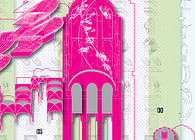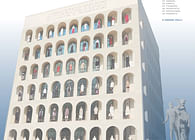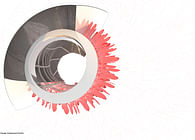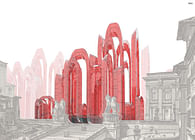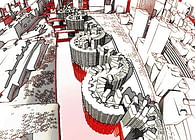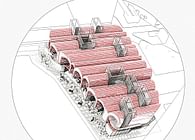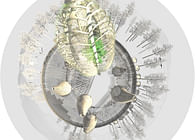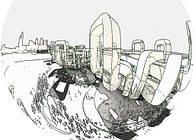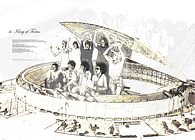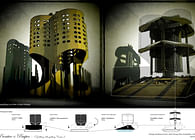
Black Holes of Architecture
The term black hole did not originate in the field of astrophysics.
Black hole refers to the slang for military prison from 1756 per the conditions of confinement in Calcutta, and the deaths there by caused. Could a comparison be made between the historic earthbound condition and the celestial black hole as a reason or cause for the subtraction of a typology in architecture? In other words, what would be the existence of a black hole in today’s society? Currently there are more prisons and jails in America than universities and colleges. Also, the prison population in America has increased from 380,000 in 1975 to 2.4 million today. Theses conditions parallel how black holes are described to react spatially. In layman terms a black hole performs in the following way: matter tells space how to curve and space tell matter how to move. With this said, the matter of prisons are curving the space of society in a radial way producing an unforeseen movement. This movement is that 1 out of every 110 persons in American is now the increased percentage in prison over the last 40 years. The five thousand plus prisons and jails in America are black holes of architecture, which need to be addressed through an act of subtraction. This proposal is not extreme and will not affect all prisons on a macro level, but instead will focus at the micro level of three specific prisons. The type of structures are Metropolitan Corrections Centers (MCCs), and were built as part of a federal demonstration program in humanitarian prison conditions. The MCC’s were conceived as a project for pre-trial male & female prisoners by the Bureau of Prisons in the 1970’s and five cities were selected for construction. Only three MCC’s were ever built and the cities of their locations are New York, Chicago and San Diego.
The MCC in Chicago designed by Harry Weese in 1975 is the one selected for removal as a model for creating two types of infrastructural voids in the typology of black holes in architecture. The following two steps of removal will produce radial tipping points in the American prison system. Step one is the removal of all prisoners from the MCC as a means of voiding the building’s program. This voiding creates the opportunity for step two which is the elimination of all security devices, aka bars, gates, etc. in the building as they are obsolete without the prior program. These two acts of expulsion and or subtraction at a human scale produce a double black hole condition in prison architecture which sum is a new programmatic circumstance. The circumstance in algebraic terms is a double negative (spatial voids), which equals a positive result. The positive condition within the voided MCC is that of pleasure. The MCC is repurposed as a twenty-seven-story Airbnb skyscraper in the loop of Chicago. The repurposing of prisons into temporary housing in countries worldwide acts as the precedent for this introduction of a new American architectural typology. Prisons are the black holes of architecture, especially in America, but removing the temporary holding nature of the MCC’s prisoners will produce a positive light from a so-called inescapable space for the first time into the social realm of everyday existence.
Status: Competition Entry
Location: Chicago, IL, US
My Role: design scientist & writer
Additional Credits: S. Hjelte Fumanelli - project architect & digital modeling



